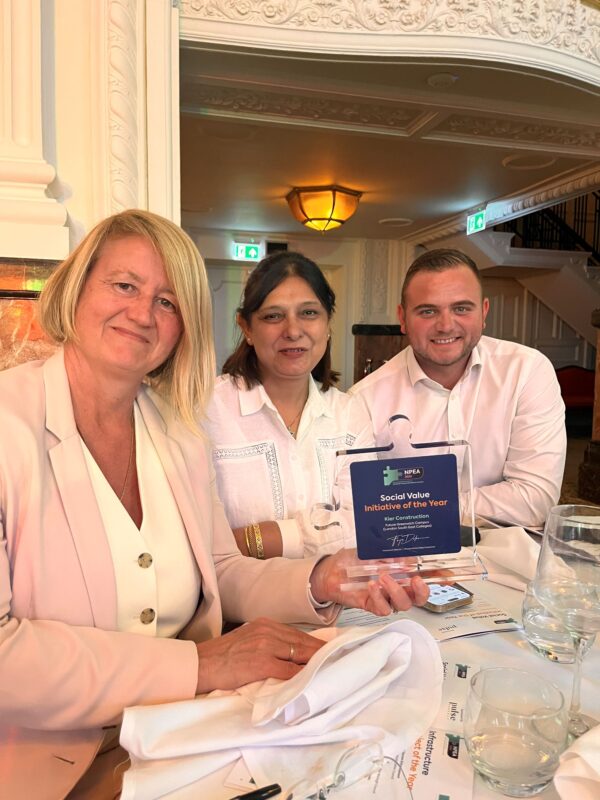Managing partners and stakeholders effectively in further education
By Lis Anderson, director, AMBITIOUS PR
When it comes to running a successful sixth form college or further education establishment, knowing your organisation inside out really is crucial for every leader. That certainly applies to maintaining the trust of people with a vested interest in its ups and downs – and that means those inside and outside any organisation in the sector.
From students, staff and governors to local schools, universities and employers, it’s vital that they are all kept in the loop. They are the stakeholders and partners with the capacity to play a vital role in the successful journey of your organisation, so you need to keep them on your side.
And key to that is successful stakeholder management – maintaining and promoting strong and positive working relationships with those people most likely to have a significant impact on the fortunes of your organisation.
Good stakeholder management is about building relationships and maintaining relationships with your various stakeholders, so you are all on the same page. It is important to monitor and connect with the stakeholders who matter the most as part of your pursuit of communications and organisational objectives. Stakeholder challenges should be assessed and prioritised before engaging with them through dialogue, thought leadership and collaboration to bolster credibility.
Here are six steps to a successful stakeholder engagement process.
Stakeholder analysis
Identifying relevant stakeholders is fundamental.
That process of managing stakeholders with a possible influence on your success should begin with audience definition – understanding who your business needs to connect with and why. Every school and college have audiences and stakeholders – whether it’s individuals, groups or other organisations with a vested interest in your activities – from students, parents and staff to schools, local authorities and universities.
It is important to identify those internal and external stakeholders with a personal and/or professional interest in your place of learning. Each will have different expectations and requirements.
The role of stakeholder management – which should form part of a robust communications plan – is to inform and influence stakeholders’ attitudes and actions.
It is worth investing time and resources in the process of audience and stakeholder mapping – it will provide a good understanding of what you need to do.
Stakeholder mapping
Investment in stakeholder maps helps identify and understand how to connect to and through different audience groups, who to prioritise, how to ensure they stay informed and how best to engage them.
And to ensure everything is connected, it is important that a stakeholder map is part of an overall communications plan to reinforce positive stakeholder relationships and engage with potential stakeholders. By creating a stakeholder map you can pinpoint the position of all your partners and stakeholders by the impact they have on your organisation, so they receive appropriate levels of attention.
On top of confirming contact details, you should then establish the most suitable means of communication for each segment of your audience and when you want to update them on developments.
From the outset, it is also worth working together and checking in with members of your stakeholder community to establish their expectations and to find out how they would prefer to be kept informed. That would mean establishing regularity and mode of communication – whether they want in-depth reports or bullet-pointed summaries but also if they want daily, weekly, monthly or termly bulletins.
As well as written updates, it is also to see if all your stakeholders would prefer updates in video form or even if they would like to attend events and meetings. They might even prefer conference calls so they can keep abreast of key developments. If so, you should assess your capacity to cater for these requests and act accordingly because that will ensure better understanding and better relationships by increasing stakeholder trust.
Content creation for stakeholder audiences
It is important to avoid a basic, one-size-fits-all approach as part of your stakeholder engagement strategy. There should be different messages for different audiences, so it is important to establish the most effective touch-points on the education pathway. It is important to consider what you are trying to achieve with each and every message you share with your stakeholders.
Certain things will have different meanings for different audiences as is the case, for example, with announcements around student welfare and mental health initiatives in Corporate Social Responsibility (CSR) to parents and carers whose key concern is their loved ones.
Taking a lead
Education is very much a team effort and while teamwork is key to good stakeholder management, ownership is crucial. With a rich and diverse audience, it is important that the principle is not the only person who leads on the communications front.
Indeed, with the right support from colleagues, specialist staff members should be taking the lead to make sure messages have maximum impact. So, for example, if there is a special schools liaison officer in the building, then that person should be putting together and signing off communication with feeder schools. Or it might be a special project manager if you decide to push boundaries and expand your facilities.
The same applies to dealing with employers in the world of industry and commerce and higher education institutions – there should be a specialist lead.
Planning ahead
They say timing is everything and that certainly applies to an effective stakeholder management plan.
It is important that education chiefs plan to make sure that the timing of any announcement is carefully plotted. It is vital, for example, that students, parents, staff and governors hear what is happening first ideally at the same time as those outside the organisation such as local schools, employers and local government officials and councillors.
They should be kept in the frame as soon as possible and certainly before anything enters the public domain in a shape of a press release. That is because the first priority has to be your internal stakeholders and external stakeholders on your side. The last you want to do is give them a surprise when they pick up their local newspaper.
New technological advances can smooth the way you manage stakeholders so it will be worth exploring investing in stakeholder relationship management software to boost efficiency and mitigate risks.
Projecting ahead
As well as keeping key stakeholders and partners up to date in a timely, appropriate manner on an ongoing basis, special consideration should also be given to specific projects from inception to final stage.
Should, for example, your organisation begin a push to create the new facilities that will be key to meet your business goals and ensure you keep moving from strength to strength, then your stakeholders will be key to the project success.
From the word go as part of project management, it is vital that they are kept abreast of the project throughout the planning stage, through execution and delivery, right through to a successful outcome.
For they will not only be able to bring important influence to bear on the project and maybe have the ear of key decision makers to ensure healthy relationships with important external bodies, but they may also be able to offer advice that may prove invaluable and can eliminate delays.
In these circumstances, project managers should take ownership of communications as that person will have what it takes to boost the chances, for example, of a favourable final decision by local councillors, that will be critical to delivering positive outcomes.
This is due, for example, to having in-depth knowledge of project risks when a new building is needed, to day-to-day familiarity with the project – to identify project stakeholders and manage stakeholders as well throughout.
Then all appropriate stakeholders and different groups beyond the project team will be on the same page to alleviate concerns, ensure successful projects and all-round positive project outcomes which will nurture good relationships with those who have a significant interest in your organisation.
Building your team
Teamwork is a vital part of paving the way for success when it comes to achieving academic success and that is even more important when it comes to the overall health of further education institutions.
The importance of keeping partners and stakeholders onside cannot be underestimated. If you plan methodically then you will be able to make sure that you not only keep on side your key allies but also win over those with concerns to ultimately secure better outcomes all-round.
It sounds like a complex process but a robust stakeholder management plan – which considers every stakeholder’s interests – should stand you in good stead to achieve your goals.











Responses